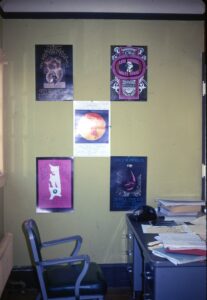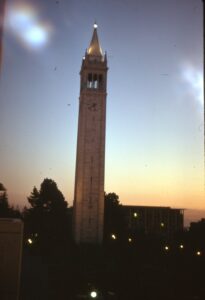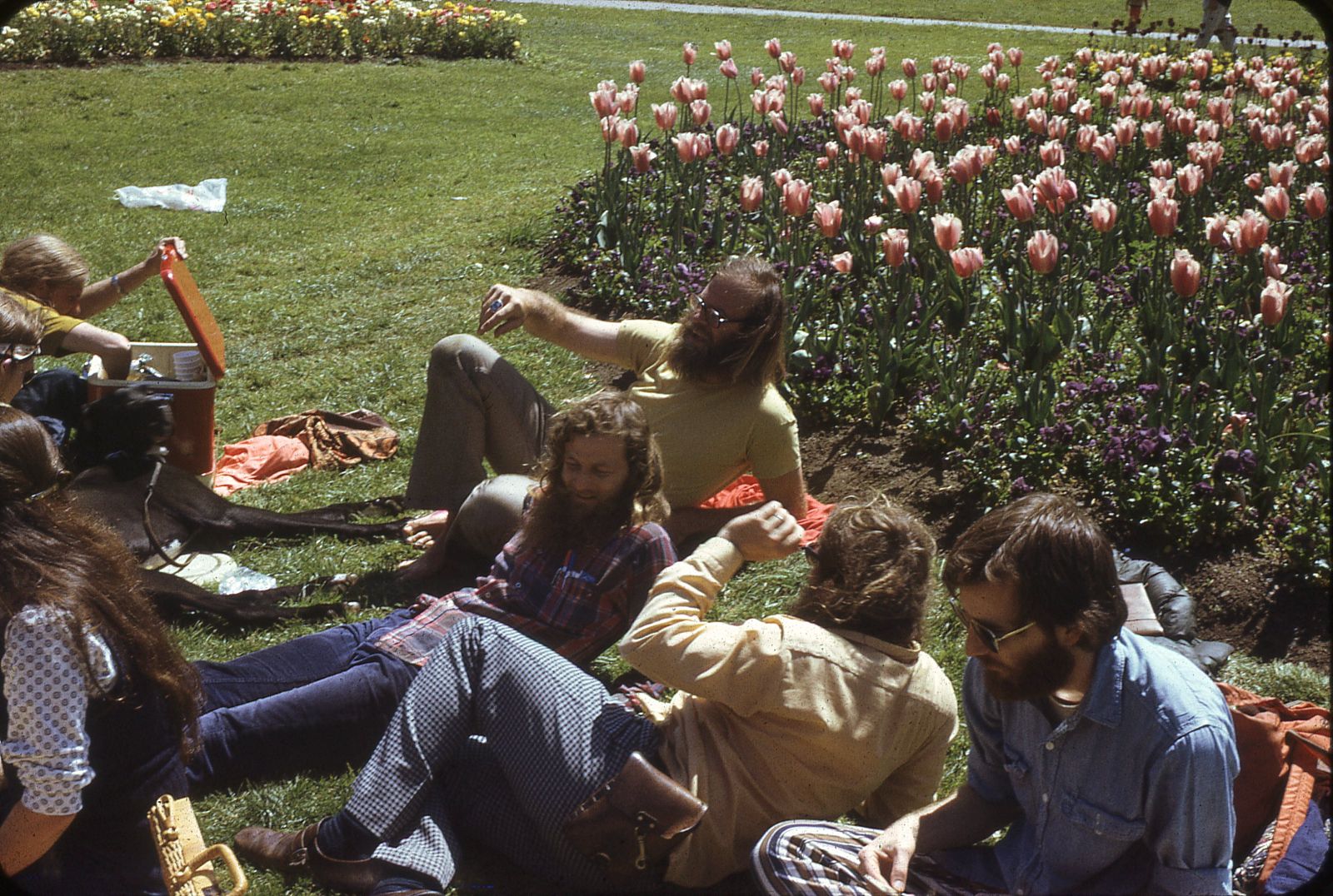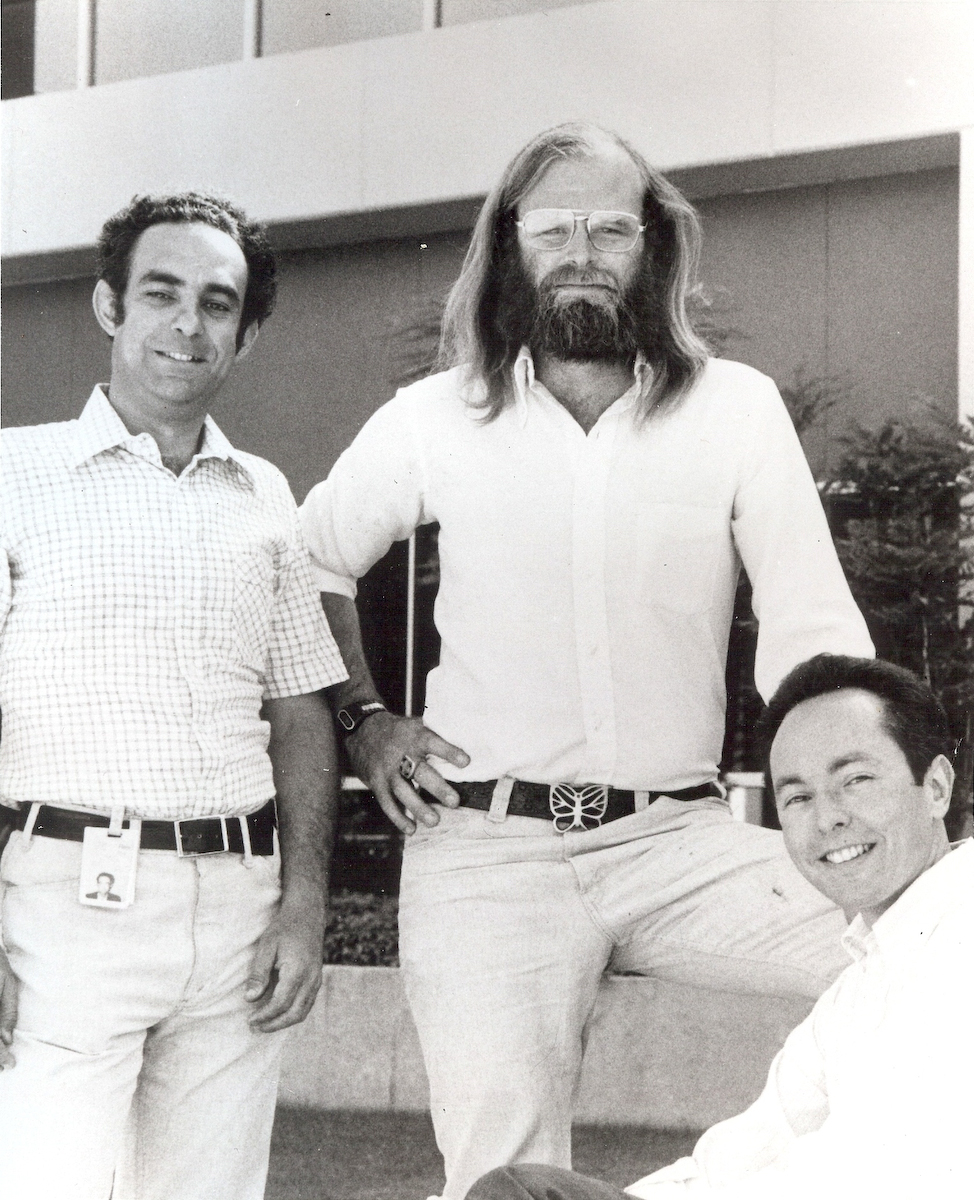As an undergraduate at the University of California at Berkeley in the late 1960s, I first learned of John Backus and his work on Fortran, BNF, and Algol. Around 1972 or 1973 I attended a talk John gave on “variable-free programming” at Berkeley. I was fascinated by programming languages (having worked on implementations of Snobol4, APL, and Lisp by that time), so I obtained and read a copy of his report “Reduction Languages and Variable-Free Programming”. In mid 1973 he mailed out a preprint of his POPL paper “Programming Language Semantics and Closed Applicative Languages“, whose margins I filled with notes.
In early 1974 I was looking for a job. My friend Jim Gray, who was then working at IBM Research in San Jose, introduced me to John, who was looking for someone to work with him on the design of his Red language and to implement an interpreter. We seemed to hit it off, and in March I accepted his employment offer. John mostly worked out of his home in San Franscisco. We discussed the possibility of locating my office in IBM’s Palo Alto Science Center, but I wound up joining the staff of IBM Research in San Jose, which was then located in the triangular Building 28 of the IBM Cottle Road Campus. John began driving down to San Jose once or twice a week in his diesel Mercedes. The only place in the area he could refuel was a truck stop in North San Jose. IBM colleagues told me I’d had an immediate positive impact: they now saw John much more than before.
For the next 15 months or so, I worked with John, discussing language features, writing various prototypes in Lisp and McG (an ISWIM-like language by W.H. Burge), reading papers on programming language semantics, and writing a report “A Church-Rosser Property of Closed Applicative Languages” that showed the operational semantics for Backus’s Red language was well-defined.
John was an inspiring person to work for and with. Despite his accomplishments (inventor of Fortran and BNF; Algol contributor; IBM Fellow) and the age difference (he started work at IBM the year after I was born), he treated me like he treated everyone: as a respected colleague. I had many suggestions for changing and extending Red, and John gave them all his complete attention. At that time, John was interested in pure functional programming, with no side-effects on storage or the external world. I advocated extending the language to allow writing complete interactive applications. John conceded the importance of this, and came up with a scheme in which one would write a function to express the complete transformation of an application on the global state. I struggled with John’s variable free style, and suggested we allow lambda variables when defining a new functional form (higher-order function), but he stuck to his guns. Gradually, I came to the conclusion that it was still too early to build a full implementation of Red, and I began spending more time talking to the System R team down the hall, who were designing one of the first relational database managers, and inventing the SQL query language and formalizing atomic transactions along the way.
John rarely wanted to talk about himself, but when asked he had interesting stories to tell. When he first joined IBM, he programmed the Selective Sequence Electronic Calculator (SSEC), a huge electromechanical machine whose programs and data were punched into a paper tape the width of regular 80-column punched cards, but many feet long. By gluing a data tape into a loop, it could be traversed multiple times. John recalled having to debug a program that would go through cycles of correct and incorrect behavior. Eventually they realized that the tape had a half-twist when it was glued into a loop, converting it into a one-sided Möbius strip.
John’s 25th service anniversary at IBM was in 1975. A recognition luncheon was planned in San Jose (at the IBM Country Club, or customer conference center), and John was asked who he’d like to attend. He named several of his current San Jose colleagues (I was honored to be included), as well as his old colleagues from the 1950s, including people from the Fortran project. The person arranging the event said, “But these people are in New York…”, and then came up with the travel expenses.
Cordial relations with John were not restricted to working hours. He and his wife Barbara invited my wife and me to dinner at their home, which turned out to be near the base of the Sutro Tower, with a beautiful view looking north from the Golden Gate bridge to the east bay. John said the only disadvantage of the location was RF interference to his stereo from the television transmitters. To combat this, he’d designed a Faraday cage by lining his equipment closet with aluminum foil. We invited John and Barbara back to our modest rental in San Jose, and they graciously accepted.
When I started at IBM, Nixon was still in office. John’s distaste for Nixon was no secret to his friends at the time. He learned he was one of seven people singled out to receive a “Presidential Prize for Innovation”, but then the plans were dropped. John later wrote that he “had been secretly planning to use the occasion to denounce Nixon and the Vietnam war. … I guess now my plan was not a gentlemanly scheme, but anyway I was relieved when the plan fell through.”
I stayed at IBM until November 1976, working on the System R recovery manager with Jim Gray, and then moved on to another job. A while later, I ran into John waiting in line for one of the West Coast Computer Faires — probably the first one, in 1977 in San Francisco. John told me he’d sent a deposit on an interesting computer called the MicroMind, from an outfit in Cambridge, MA, called ECD Corp. He was beginning to be skeptical that he would ever get a computer or his money back. I recently heard from Olin Sibert that ECD couldn’t build the machines cheaply enough, and returned all the deposits.
In 1977 John received the ACM Turing Award for “profound, influential, and lasting contributions to the design of practical high-level programming systems, notably through his work on Fortran, and for seminal publication of formal procedures for the specifications of programming languages.” John’s Turing Lecture, “Can Programming Be Liberated from the von Neumann Style? A Functional Style and Its Algebra of Programs” was devoted to his functional programming work, and had a large impact on the growth of a branch of academic computer science studying functional programming languages. John continued to work on functional programming until he retired in 1991.
I fell out of touch with John for many years. But in 2003, an effort I became involved with at the Computer History Museum to collect and preserve historic source code led me to get in touch with John regarding the original Fortran compiler. John was still living in the same house in San Francisco, and seemed pleased to hear from me. He didn’t have any source code, but did make several suggestions; eventually I found several versions of the IBM 704 FORTRAN II compiler source code.
Around this same time, I learned that John’s idea of an algebra of programs had had a big impact on my colleague Alex Stepanov (although Alex figured out how to apply this idea while extending the “von Neumann style” in an important way). At the time, Alex and I were organizing an internal technical conference for our employer, and we invited John to give a keynote speech. Just after he graciously accepted, his wife Barbara died; understandably he canceled the speech. John decided to move to Ashland, Oregon, to be near one of his daughters. Another colleague of mine, Dick Sweet, lives in Ashland and introduced John to a new circle of friends for what turned out to be his final years.
Although many people contributed to the early development of programming languages, John Backus deserves credit for creating the first successful higher-level programming language, Fortran. Fortran provided data types (integer and floating-point numbers), a powerful data structure (the array), expressions, statements, and abstraction mechanisms (functions and subroutines). The Fortran compiler generated optimized code taking advantage of the then brand new index registers and floating-point hardware of the IBM 704. Finally, the Fortran system provided a linking loader, a subroutine library, and I/O routines. The scientific and engineering users adopted it instantly, and it became the standard against which future programming language designs were compared.
Why was John’s contribution so important? He invented a language allowing one to express numeric algorithms in a way that was abstracted from irrelevant details of particular computers but that was efficiently implementable on a broad class of computers: from the vacuum tube IBM 704 of 1954 to the fastest supercomputer of 2007 and beyond. That idea, allowing the essential details of algorithms and data structures to be expressed in an abstract and yet efficient way, is at the heart of what programming language designers have been trying to accomplish for the last 50 years. Only a handful of them have made the kind of progress John Backus and his team did.
Update 2014/05/10: community.computerhistory.org/scc => www.softwarepreservation.org; 2016/01/02: changed link for “Building 28” and John’s Turing Lecture; 2021/09/25: changed link for “Building 28” again; 2024/05/08: updated links for SSEC and System R recovery paper.







